L’tree spurge (Euphorbia dendroides) is a plant belonging to the family of Euphorbiaceae. The genre Euphorbia it is very vast and includes many different species, some of which are arborescent, others shrubs, others are herbaceous and, finally, many are succulent, similar to cacti. These plants are mainly found in tropical areas of Africa and Latin America. In Europe, especially in the countries of the South, the species dendroides it is the most widespread in the spontaneous state and represents a typical component of the Mediterranean scrub.
The plant has very special botanical characteristics that are worth knowing. It is also considered a very easy ornamental to grow in the garden. Let’s get to know it better.
Description of the tree spurge
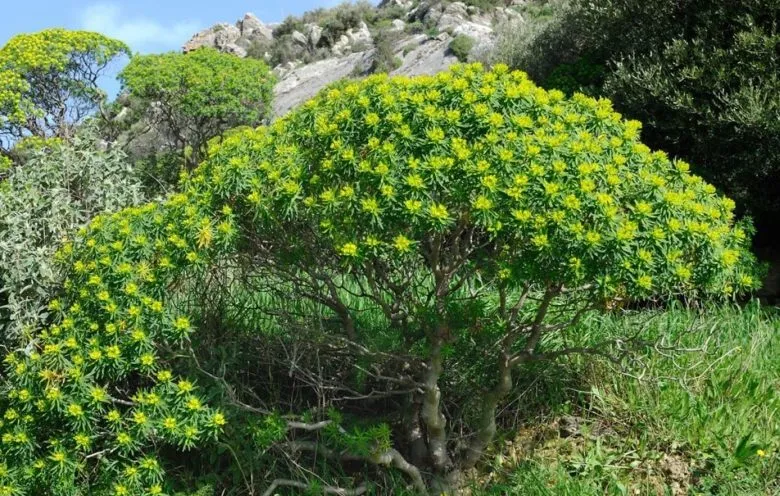
The arboreal euphorbia looks like a small bushy sapling, of variable height from 1 to 3 m, the largest of the European euphorbia. The hair is regularly hemispherical, which makes it really beautiful aesthetically.
The root system is superficial and extended. The branches are hairless, with light brown bark. There are younger branches, then the twigs of the year, and finally the older branches. The young twigs are inserted in a di- or tri-cotome way at the apex of the branches of the previous vegetation and show the scars of the fallen leaves.
L’Euphorbia dendroides it loses its leaves, but, as we shall see shortly, in a different way from most other deciduous plants.
Leaves
The leaves of the arborescent euphorbia are scattered, hairless, uninerved and present only on the young branches. In the lower part of the branch they are pendulous and reddened. In the upper one, near the inflorescences, they are erect-patent.
The leaf blade is oblong-lanceolate in shape, with an obtuse apex and a small mucron.
Phenomenon of aestivation
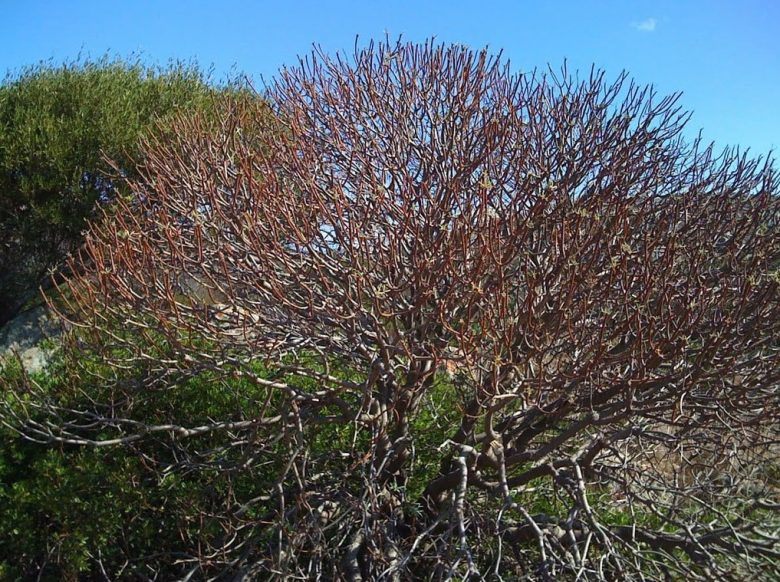
Let’s now see a botanical peculiarity of the arboreal euphorbia which takes the name of aestivation. On euphorbia plants the leaves persist on the plant from autumn until the month of May, maintaining a beautiful green color. As summer approaches, and therefore heat and drought, they begin to change color, becoming reddish before falling completely in the middle of summer. Therefore, in summer the tree spurge is completely bare, as if it were winter. The new vegetation is formed with the first autumn rains.
This particular biological cycle, a kind of summer dormancy, is a defense mechanism of the plant to survive the drought. The aestivation mechanism is however flexible, with adequate water supplies the plant can keep the leaves even in summer.
Flowers
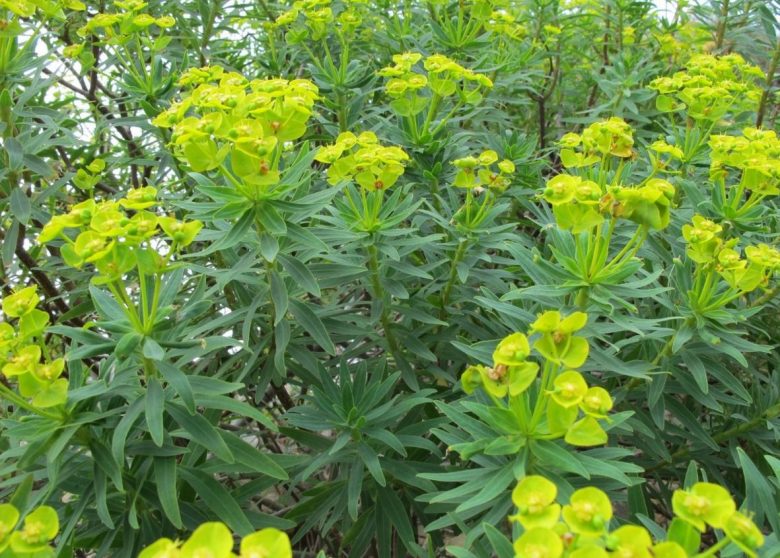
In the’Euphorbia dendroides the flowers are cyathia (inflorescence with the appearance of a flower), typical of the genus Euphorbia. These cyathia are grouped in umbels with 5-15 rays, thick and shortened. Each has a light green colored casing, surrounded by small bracts and round glands with irregular yellow lobes.
Flowering occurs in late winter and spring, with anemophilous pollination, that is, operated by the wind.
Fruits and seeds
The fruits are trigone capsules, dehiscent, of a greyish-green color, containing 3 seeds.
These are smooth, gray, flattened laterally, equipped with elaiosomes (small fleshy formations that the ants use after having brought the seeds of the nest, favoring the myrmecoria). The fruit has a particular snap-opening mechanism, which allows the seeds to be thrown away from the mother plants. This natural dissemination technique is very similar to that of donkey watermelon.
Latex
Another peculiarity common to all euphorbia plants is the irritating latex contained in them. This latex is released from the plant at the slightest injury, and is very dangerous. Contains very aggressive di- and tri-terpenes on the mucous membranes of the skin, mouth and eyes. Due to its presence, the plant is considered an ichthyotoxic species, that is, harmful to aquatic organisms. In fact, latex was once used in poaching in fresh water.
Habitat and diffusion
The tree euphorbia grows spontaneously in rocky areas near the coasts, at an altitude between 0 and 700 meters above sea level. It is often found in inaccessible areas, where it forms extensive populations. The soils in which it grows are preferably calcareous ones. It is a steno-Mediterranean species In Italy, in the wild it is widespread along the Tyrrhenian, Ionian and Lower Adriatic coasts.
How to grow tree spurge in the garden
The tree spurge, in addition to growing spontaneously, is widely cultivated in the garden. It is a plant appreciated for its ornamental value, thanks to its perfect hemispherical shape and its ability to vegetate and flower in the middle of winter. In summer it is completely or partially bare, but before the leaves fall, its reddish color is pleasant. Even without leaves, the euphorbia remains beautiful to see for its regular dichotomous ramifications.
Furthermore, some studies show how the aerial parts can also be appreciated for the antioxidant and anti-inflammatory properties.
Climatic needs
Despite vegetating in winter, the tree spurge is able to withstand temperatures just below zero, even if, being a Mediterranean plant, it does not tolerate intense and prolonged frosts. As for the heat, it is one of the most resistant species of the Mediterranean flora.
Exposure
The plant is quite demanding in terms of light, which is why it should be exposed in full sun in the garden.
Ground
The milkweed plant adapts well to any type of terrain, with the only limit of strongly clayey soils. The ideal is a soil with a coarse structure, well drained, basically dry. It does not need to be fertilized, possibly in the final transplant phase the soil can be amended with a light fertilizer, such as home compost or earthworm humus.
Reproduce tree spurge starting from seed
The tree euphorbia can reproduce first of all from seed, which after ripening maintain an excellent germination capacity, between 60 and 80%.
Sowing should be done in autumn, in 12-14 cm diameter pots, following the natural cycle of the plant. The young seedlings must be protected from frost, but kept in a very bright position. The ideal is to have one cold greenhouse (like this one).
Once the seedlings are born, they must be kept in pots until the following autumn, the ideal time for the definitive transplant in the open ground. Of course, if you don’t want to start from seed, you can buy pot-grown plants in nurseries.
Reproduce tree spurge starting from the cutting
The plant can also be multiplied with the cutting technique. The sampling must be done in spring, on apical portions of the branch and on plants not yet in bloom.
When taking the cutting, it is necessary to pay attention to the latex, so it is good to use protective gloves, goggles and possibly also a mask, to avoid breathing in the vapors.
The ideal substrate for making the euphorbia cutting is a mix of universal soil and perliteto always be kept moist enough and in a bright position.
Water needs
During the growing season, from autumn to spring, the tree spurge is satisfied with natural rainfall.
In the garden, it can be irrigated in summer to keep the leaves green and partially prevent them from falling. Water supplies must be moderate, at most once a week.
Parasites
The tree euphorbia is resistant to parasites, probably due to the presence of the irritating latex inside.
How to prune tree spurge
Euphorbia cannot be pruned, for two reasons. First of all because it has a natural hemispherical shape, very harmonious, which is not worth ruining with pruning cuts. Secondly, pruning should be avoided due to the risk of linked to the latex content. If you really need to cut some dry branches, the advice is to equip yourself with adequate protection.

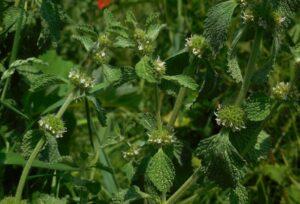
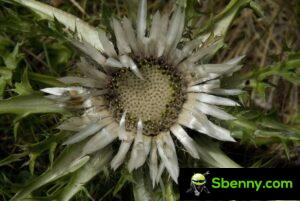
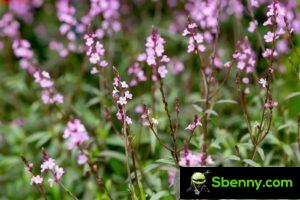
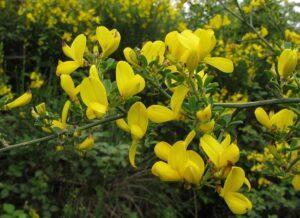
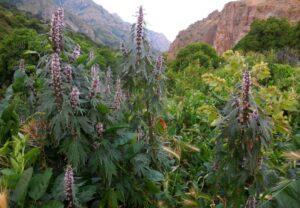
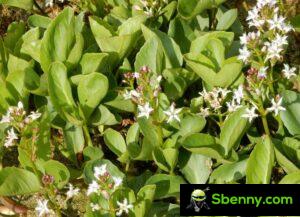
Start a new Thread